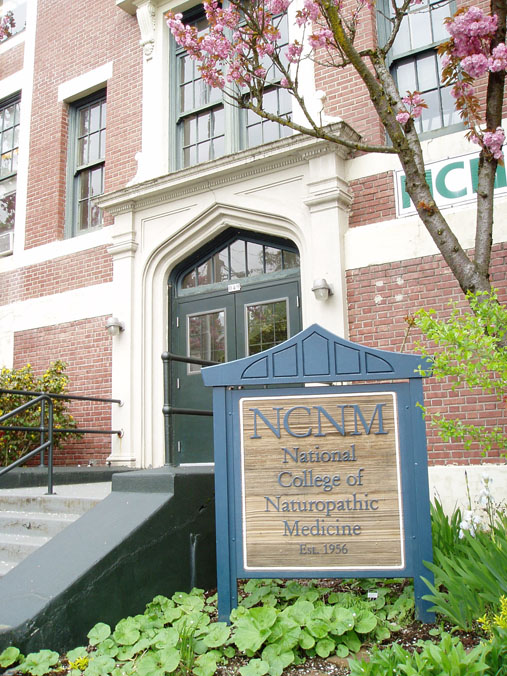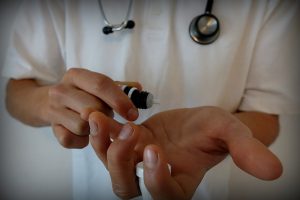 BS asks: “Is Naturopathy New Age?”
BS asks: “Is Naturopathy New Age?”
Yes. Naturopathy is a whole medical system that is based upon a philosophy that emphasizes the healing power of nature and incorporates the New Age belief in a “vital force” or “energy” that supposedly pervades the universe.
Dr. Arlan Cage of South Bay Total Health describes this “vital force” as: “Naturopathic Medicine is based on the philosophy of Vitalism: that all living beings possess an intelligent, living energy which gives us an innate ability to heal. Naturopathic Medicine, based in European traditions, calls this energy the Vital Force. Oriental Medicine traditions call it the Qi; Ayurvedic Medicine from India refers to it as Prana. Every traditional culture from around the world has their own term for this phenomenon, and more than 95 different names for the Vital Force have been recorded.”
For those who are unfamiliar with naturopathy in general, the National Center for Complementary and Alternative Medicine (NCCAM), which is part of the National Institutes for Health, describes it as being based on the central belief that nature has its own healing power (a principle practitioners call vis medicatrix naturae). Practitioners believe their role is to support this natural healing power and prefer to use treatment approaches they consider to be the most natural and least invasive.
Some of these methods include nutrition counseling (such as eating more whole and unprocessed foods), the use of vitamins and other supplements, herbal medicines, homeopathy, hydrotherapy, exercise therapy, massage, fasting, acupuncture, Chinese medicine, minor surgery, and a variety of other pseudoscientific treatments.
Considered a holistic approach, naturopathic doctors seek to treat the whole person, physical, mental, emotional, spiritual, genetic, environmental and social – which is where many New Age/occultic treatments can be introduced to the patient.
Dr. Benedict Lust (1872-1945)is considered to be the founder of naturopathy in the U.S. In his native Germany, he had been exposed to a wide range of natural healing arts, including that of a Catholic priest named Sebastian Kneipp (1821-1897) who opened up a “water cure” clinic after becoming convinced that he and a fellow student had cured themselves of tuberculosis by bathing in the Danube River. Dr. Lust brought Fr. Kneipp’s hydrotherapy techniques with him to America in 1892. Ten years later, he founded the American School of Naturopathy. Over the course of the next 20 years, naturopathic medicine grew into a holistic system that embraced a variety of alternative healing systems such as homeopathic and herbal methods while rejecting anything associated with conventional medicine.
 Currently in the United States, naturopathy has three general categories of practitioners: naturopathic physicians, traditional naturopaths, and other health care providers who also offer naturopathic services. The titles used by practitioners may vary (for example, both naturopathic physicians and traditional naturopaths sometimes refer to themselves as “naturopathic doctors” or by the abbreviation N.D. or N.M.D.) even though there is a big difference between these two types of practitioners as far as their academic qualifications and the types of treatment they offer.
Currently in the United States, naturopathy has three general categories of practitioners: naturopathic physicians, traditional naturopaths, and other health care providers who also offer naturopathic services. The titles used by practitioners may vary (for example, both naturopathic physicians and traditional naturopaths sometimes refer to themselves as “naturopathic doctors” or by the abbreviation N.D. or N.M.D.) even though there is a big difference between these two types of practitioners as far as their academic qualifications and the types of treatment they offer.
As the NCCAM explains, traditional naturopaths, also known simply as “naturopaths,” emphasize naturopathic approaches to a healthy lifestyle, strengthening and cleansing the body, and noninvasive treatments. They do not use prescription drugs, injections, x-rays, or surgery.
Several schools offer training for traditional naturopaths, often through distance learning (correspondence or Internet courses). Admission requirements for schools can range from none, to a high school diploma, to specific degrees and coursework. Programs vary in length and content and are not accredited by organizations recognized for accreditation purposes by the U.S. Department of Education. Traditional naturopaths are not subject to licensing.
Naturopathic physicians have much more education and are generally required to complete a four-year, graduate-level program at one of the North American naturopathic medical schools accredited by the Council on Naturopathic Medical Education. Admission to a naturopathic medical school generally requires a bachelor’s degree and standard premed courses. Graduates receive the degree of N.D. (Naturopathic Doctor) or N.M.D. (Naturopathic Medical Doctor), depending on where the degree is issued.
However, it’s important to note that the standard of this education has been called into question by former naturopaths who say the courses studied are nothing like what is offered in traditional medical schools. This site provides a look at the shocking contents of a typical textbook.
According to this article written by former naturopathic doctor, Britt Marie Hermes, “A licensed ND needs to have graduated from a program accredited by the Council on Naturopathic Medical Education (CNME), which is granted programmatic accrediting status by the U.S. Department of Education. Many, especially NDs, often confuse CNME accreditation with government endorsement. In fact, CNME has accrediting power because it meets administrative criteria, not because the naturopathic curriculum is medically sound. Tellingly, naturopaths accredit their own programs.”
Hermes goes on to say that accredited naturopathic programs play “fast and loose” with biomedical science. “Much of the curriculum is homeopathy, herbalism, hydrotherapy, craniosacral therapy, chiropractic manipulation, and naturopathic philosophy. Some classes are taught with the same titles as courses in medical programs, but the content is indeed inferior. NDs take gross anatomy, histology, pharmacology, and other basics, but they are not all taught by faculty members with academic expertise. For example, a person who is a ‘doctor of naprapathy’ taught me embryology, and other courses were taught by NDs, often using naturopathic textbooks.”
Hermes, who quit her practice after discovering that her boss was prescribing an unapproved supplement for cancer, said that while in school she was taught folk remedies such as putting sliced onions over a child’s ear for an infection or wearing wet socks to bed at night to “boost the immune system.”
 As of 2010, 15 states, the District of Columbia, and two U.S. territories (Puerto Rico and Virgin Islands) have licensing requirements for naturopathic physicians. In these jurisdictions, naturopathic physicians must graduate from a 4-year naturopathic medical college and pass an examination to receive a license. Their scope of practice is defined by law in the state in which they practice (for example, depending on the state, naturopathic physicians may or may not be allowed to prescribe drugs, perform minor surgery, practice acupuncture and/or assist in childbirth).
As of 2010, 15 states, the District of Columbia, and two U.S. territories (Puerto Rico and Virgin Islands) have licensing requirements for naturopathic physicians. In these jurisdictions, naturopathic physicians must graduate from a 4-year naturopathic medical college and pass an examination to receive a license. Their scope of practice is defined by law in the state in which they practice (for example, depending on the state, naturopathic physicians may or may not be allowed to prescribe drugs, perform minor surgery, practice acupuncture and/or assist in childbirth).
Other health care providers (such as doctors of medicine, doctors of osteopathy, doctors of chiropractic, dentists, and nurses) may sometimes offer naturopathic treatments.
Even though naturopathic practitioners use only “natural” treatments, this does not mean they are without risk, which is why the NCCAM cautions people to never completely substitute naturopathy for conventional care because many practitioners use approaches that are ” not consistent with conventional medicine”, and their safety may not be supported by scientific evidence. It is also highly possible that even the most pure and natural herbs can cause side effects of their own as well as interact with prescription or over-the-counter medicines.
Perhaps one of the best examples of what can go wrong in naturopathy involves the case of an unlicensed naturopath named Brian O’Connell from Colorado who was sentenced in 2006 to 13 years in prison for the wrongful death of 19 year-old Sean Flanagan.
Sean was terminally ill with Metastatic Ewings Sarcoma and had exhausted all medical cures when his parents brought him to O’Connell’s clinic for treatment in 2003. The family paid O’Connell $7,400 for “photoluminescence” treatments in which blood is removed from the patient, exposed to ultraviolet light, then returned to the body along with a diluted solution of hydrogen peroxide. According to the complaint filed by Sean’s parents, even though the boy developed a serious blood infection as a result of O’Connell’s bizarre and unsterile procedure, treatments continued until he died nearly 10 days later.
Sadly, this wasn’t the first time O’Connell would be called into court for his “photoluminescence” procedure. On March 30, 2004, his Colorado clinic was raided by police after doctors at a nearby hospital reported having to treat several of O’Connell’s patients. One was a 17 year-old girl named Catherine “Cat” Bresina who suffered a cardiac arrest after a photoluminescence treatment. Two days earlier, a colon-cancer patient died in the hospital hours after O’Connell treated him.
Another problem with O’Connell – and one that affects many other naturopaths – is his dubious accreditation, which apparently came from an unaccredited “distance learning institution” known as the Herbal Healer Academy which was run by a woman who was sued in 2002 by the Arkansas Attorney General for offering two-week courses that qualified people to practice naturopathic medicine.
These bogus “schools” plague the field of complementary and alternative medicine by pumping out hundreds of perhaps well-meaning but completely unqualified people to practice medicine of any kind, either natural or conventional. For this reason, not even Consumer Reports gives naturopathy a very high grade.
Today’s naturopathy may not sound as religious as it did in the early days, but Lust’s philosophy of Therapeutic Universalism remains – which is a problem for Christians.
“In 1989, the American Association of Naturopathic Physicians formally recognized that naturopathic medicine is ultimately defined ‘not by the therapies it uses but by the philosophical principles that guide the practitioner.’ Contemporary naturopathic literature still abounds with professions of faith in vitalism, respect for the healing power of the vital force, and the superiority of natural therapeutic agents to artificial ones,” writes James Whorton, Ph.D.
It’s important to understand that commitment to this vitalism is intrinsic to the naturopathic worldview, which is antithetical to Christian belief. Naturopathic vitalism is based on the belief “that life derives from and is sustained by some power or spirit that transcends the chemical and physical forces that govern the phenomena of the inorganic world. Natural methods worked because they acted upon the vital force resident within every human being, stimulating it to restore the body to wholeness. But that force, naturopaths proclaimed, was not merely vital; it was in fact divine spirit, every living thing’s own parcel of ‘the Omnipotent Power, which created the universe.’ It was Therapeutic Universalism indeed!”
This philosophy has led some naturopaths to embrace bizarre ideas throughout the years such as the proposal that “the first and still the greatest adherent of the art was none other than Christ; Jesus, one asserted, was ‘a most proficient Naturopath’.” Lust believed that I a great spiritual upheaval had occurred in Western civilization approximately every 500 years, beginning with Christ and followed by Muhammad, the Crusades, the Reformation—and now naturopathy.
Naturopaths are also known to rely on diagnostic methods that are based in the occult such as muscle testing, which was founded upon combined elements of psychic philosophy, Chinese Taoism, and a belief in “Innate Intelligence.”
They are also known to use a form of dowsing known as radiesthesia. “The naturopath passes a pendulum around the patient’s body and watches for deviations that pinpoint the site of a problem,” writes Dr. Barry Beyerstein and Susan Downie in this article.
While there is nothing wrong with using natural means to treat non-contagious and non-life-threatening conditions, the philosophy underlying the practice of naturopathy is why the Pontifical Council for Culture and the Pontifical Council for Interreligious Dialogue included it on a list of so-called “natural cures” that have been fueled by the rise of the New Age movement. Naturopathy is listed alongside homeopathy, essential oils, herbs, supplements, ayurvedic medicine and aromatherapy. These “natural cures” are rooted in the New Age belief that “illness, illness and suffering come from working against nature; when one is in tune with nature, one can expect a much healthier life, and even material prosperity . . .The source of healing is said to be within ourselves, something we reach when we are in touch with our inner energy or cosmic energy.” (Section 2.2.3)
While Catholics are permitted to use “natural cures” for the treatment of any condition that is not contagious or life-threatening, they should use discretion when doing so.
© All Rights Reserved, Living His Life Abundantly®/Women of Grace® http://www.womenofgrace.com









